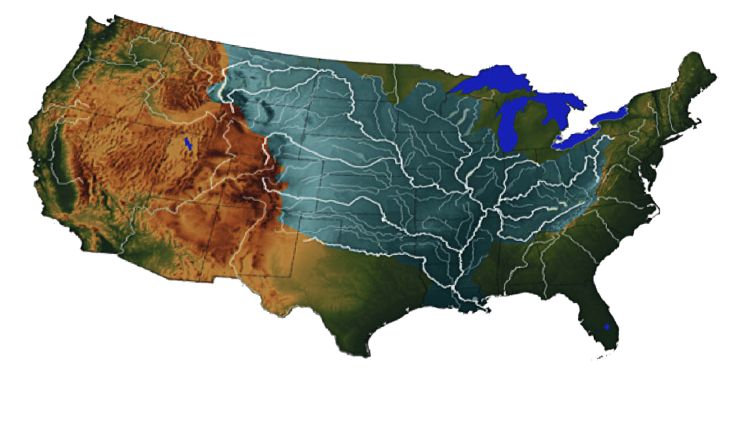(NEW ORLEANS) — On Aug. 16, Louisiana elected officials, federal partners and maritime stakeholders joined the Big River Coalition to celebrate the U.S. Army Corps of Engineers (USACE) completion of the first two phases of the deepening of the Mississippi River Ship Channel, which currently provides a maximum draft of 50 feet for vessels calling on the Port of New Orleans.
The ship channel has been mechanically deepened for approximately the first 200 miles, but additional efforts are required to open the deeper draft north of the Huey P. Long Bridge.
“The deepening of the Mississippi River Ship Channel is a transformational project that will bolster our economy, create and sustain jobs, and solidify Louisiana’s status as a global anchor for trade,” said Louisiana Gov. John Bel Edwards. “The economic growth from this project is expected to create several thousand new jobs, which comes on the heels of Louisiana reaching the lowest unemployment rate in state history. It’s an exciting time for our state, and I look forward to facilitating even more growth thanks to the partnerships we have forged.”

The increased draft is available through the Port of New Orleans to the Huey P. Long Bridge at mile 106 above Head of Passes (AHP). Expansion of the deeper draft above the Huey P. Long Bridge from 49 feet to 50 feet will require additional improvements, although the dredging has been completed to mile 175 AHP along with the additional 20 miles of Southwest Pass (195 miles total).
Phase 1 work began on Sept. 11, 2020 when Weeks Marine’s cutterhead dredge Capt. Frank commenced work on the initial dredge contract five miles above Head of Passes. The USACE also awarded a contract to Manson Construction Co. for another cutterhead dredge and a hopper dredge to complete the first phase of the deepening.
The Mississippi River Ship Channel is home to four of the nation’s top 15 ports by annual tonnage (Port of Greater Baton Rouge, Port of South Louisiana, Port of New Orleans and the Plaquemines Port Harbor and Terminal District). The overall costs for the project were estimated at $250 million; the state of Louisiana committed $81 million to match the non-federal sponsor cost-share.
“Bigger ships carrying more cargo means more jobs and economic opportunity for Louisiana and the nation,” said Sen. Bill Cassidy, R-La. “This project is a top priority for Louisiana’s entire federal delegation.”
M/V Capri, loaded with a record 134,706 metric tons of coal, was the first vessel to transit in the ship channel with a draft of 50 feet upon departure on Aug. 5 – almost 10 years to the day after the Big River Coalition revitalized efforts to deepen the ship channel. Capri departed the ship channel with a Crescent River port pilot on board until the pilot exchange occurred at Pilottown, when a bar pilot took over for the outbound voyage
through Southwest Pass to the Gulf of Mexico.
The USACE’s Economic Justification Report identified the benefit-to-cost ratio at 7.2-to-1, calling the project one of national and international significance as the ship channel moves more than 500 million tons of cargo annually, including 60 percent of the nation’s grain and 20 percent of the nation’s energy.
“As we fight to overcome inflation and supply chain bottlenecks, our ports are more important than ever,” said Rep. Troy Carter, D-La. “Here in Louisiana, the Mississippi connects us all — economically, culturally, and physically. It’s important that we work together and speak with one voice as a region on behalf of our shared goals. That’s why this
project to deepen the channel to increase shipping opportunities is so exciting — we are opening a new chapter to help energize our economy to new heights and continue to help lower costs for Americans.”
Sen. Cindy Hyde-Smith, R-Miss., who serves on the Senate Appropriations Committee, first announced support for the project to deepen the Mississippi River Ship Channel when record sediment levels overwhelmed the USACE’s ability to provide full channel maintenance during the Great Flood of 2019.
“The project to deepen the ship channel is important to the state of Mississippi and all states connected by the Mississippi River and tributaries,” Hyde-Smith said. “I appreciated work by Sean Duffy of the Big River Coalition during the record 2019 flood to build the case for providing appropriations for the emergency channel maintenance, in addition to pursuing increased annual appropriations and developing the Regional Dredge Demonstration Program in the Water Resources Development Act of 2020. My office continues to work with the Big River Coalition to advance the multiple benefits provided by the regional approach that improves the ability of the Army Corps to maintain the fully authorized 50-foot channel dimensions along the nation’s most prolific waterway. The increased draft of the ship channel will promote waterborne commerce and reduce transportation costs for Mississippi farmers and commerce on the river for decades.”
– Big River Coalition
